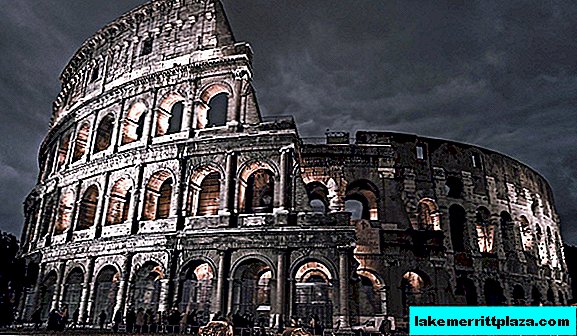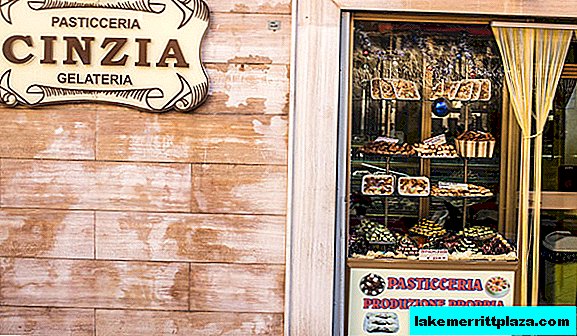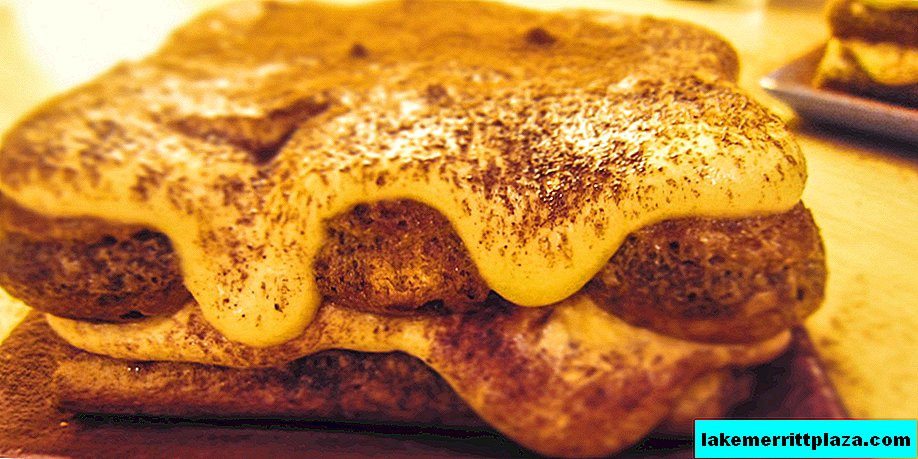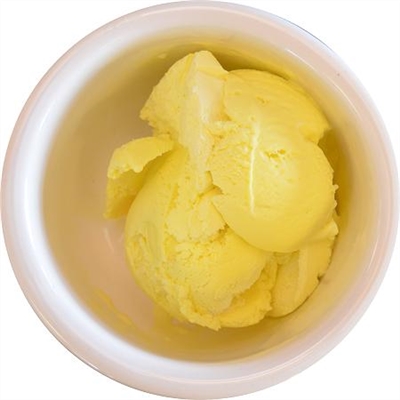Each square centimeter of Rome is a separate legend, and some
multivolume story. The famous Borghese Gallery, owing its appearance to the greedy cardinal, the pope’s nephew, still has many secrets that are only reported in a whisper in a narrow circle. In this article, you will learn about the History of the collection, where it is located, opening hours and where to buy tickets to inspect everything. And also why the Gallery is called the most inaccessible museum in Rome.
The Borghese Gallery was not in vain in our improvised TOP-list of the best sights in Italy - its history is interesting no less than the exhibits displayed in the halls. In addition, almost every exhibit has its own legend associated with natural Italian ambitiousness, a craving for beautiful and inexhaustible craftiness. However, speaking of the collection that it has Borghese Gallery in Rome, one cannot disagree with the statement that the end sometimes justifies the means.
The content of the article
1. A worthy student of Machiavelli
2. How the Borghese Gallery was created: intrigue
3. Collection of the Borghese Gallery: acquisitions and orders
4. How to get to the Gallery, visit rules and opening hours
5. Tickets to the Borghese Gallery and excursions
6. Mail for the guide Lela
A worthy student of Machiavelli
Exactly. The great humanist Niccolo Machiavelli is known to most people by the phrase from the book "Sovereign": "The end justifies the means." However, the meaning of this statement was understood by the noble Italians of the Renaissance without any special explanation. In the XV-XVI centuries. The Apennine Peninsula was swept by continuous civil wars, and each duke had to hold onto power at all costs.
The clergy also did not lag behind the nobles, especially since at times there were daredevils who encroached on the privileges and treasures of the pope himself. However, the authority of the Catholic Church in Italy remained strong enough not to fall under the blows of the wicked.
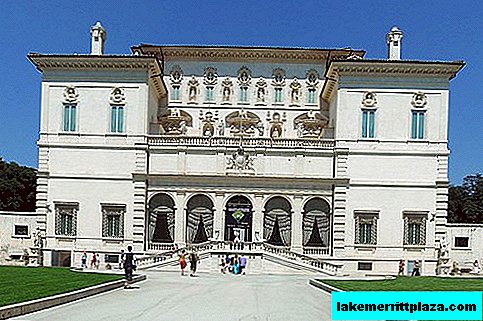
Villa Borghese was built in Rome in 1615
By the beginning of the XVII century. feudal feuds gradually migrated from the battlefields to the palace chambers. Mastery of intrigue has developed to unprecedented heights. It was then, not without the support of influential relatives belonging to the Roman elite, that Camillo Borghese was elected pope (under the name of Paul V) in 1605.
Papa had a beloved nephew - Shipione (Scipio), who immediately received a cardinal hat. Moreover, specifically for him, Paul V established a new position - Cardinal-Nepot (Cardinal-nephew), that is, a confidant of the next of kin.
The appointment allowed Shipion to manage all papal income and expenses, make decisions on confiscation of property and put in prison all who are not pleasing to the Holy See at the moment. Needless to say, he did not use these powers at a loss to himself and his family?
How the Borghese Gallery was created: intrigue
In 1613, Cardinal Nepot decided to build a villa in the vicinity of the city, where he now is Borghese Gallery. By that time, he had a decent collection of antique sculptures and paintings by masters of the Italian Renaissance, and he needed a decent building to house the collection.
The villa, designed by architects Ponzio and Vazanzio, was built already in 1615 - such orders are completed quickly. From where Borghese got the right to own vineyards on the Pincho hill, history is silent.
As for the antique, here, most likely, the case went without crime. There were so many fragments of the grandeur of Ancient Greece and Ancient Rome that most of them did not survive to our time simply because to some the statues seemed uninteresting, secondary or too vulgar. True, Shipione Borghese borrowed something from the collection of the pope himself. In particular, it was the famous "Borghese fighter", supposedly the work of Agassius (II-I centuries BC).

Gallery collection includes 560 paintings
Now this statue is located in the Louvre, "thanks" to the frantic enthusiasm of the next Camillo Borghese for the French Revolution and Pauline Bonaparte. By the way, the sculptural portrait of Napoleon’s sister in the image of the triumphant Venus was created by Antonio Canova at the same time, and anyone who is interested in the Gallery and its history can now admire the half-naked duchess.
In relation to the paintings, Cardinal Nepot was less scrupulous. So, “Descent from the Cross” by Raphael, he borrowed free of charge from the temple in Perugia, “rightly” judging that a regular church in the Papal Region is enough copies. By the way, both the parish rector and the residents of the city tried to appeal this decision, but it did not lead to anything.
A native of Bologna, Domenico Zampieri (Domenichino), who moved to Rome as a guest artist for painting temples, was even less fortunate - he was sent to a papal prison. And while he was there, Shipione Borghese confiscated all his paintings, including the beautiful "Diana's Hunt."
Borghese Gallery Collection: Purchases and Orders
But with whom the Cardinal Nepot was really lucky, it was with Caravaggio and Bernini. The paintings of Caravaggio sold out almost for nothing: to the customers (and they were also clergymen) they seemed too frank. So, the "Madonna and the Snake" from the Church of St. Anne was first given to a private collection, but from there it was bought immediately by Shipione. Already in anything, but in the poor artistic taste of the cardinal it was impossible to reproach.
As a result of such "shares" today Borghese Gallery in Rome He has the most extensive collection of Caravaggio paintings in the world, including the well-known to everyone from the albums "Young Men with a Fruit Basket" and "David with a Goliath's Head". It is noteworthy that, contrary to tradition, Caravaggio captured himself as a defeated giant, and not the future king of Judea.
Bernini's sculptures - "Apollo and Daphne", "The Abduction of Proserpine", "Amalfey", "Aeneas, Anchises and Askanias", a bust of Shipione Borghese himself - these are works made by the sculptor commissioned by the cardinal. The sculptor created most of them when he was no more than 25 years old, because already at 16 he had the glory of “the second Michelangelo,” which could not but attract the attention of the papal court.

"Apollo and Daphne" was made by Bernini commissioned by the cardinal
His masterpieces are not just masterfully silent figures embodied in marble. No, they live, breathe, are in motion and seem to be about to speak. And in the image of David, at the very moment when the biblical hero is about to throw a fateful stone, Bernini captured himself. Moreover, in the process of working, the future Pope Urban VIII held a mirror in the face of the sculptor.
After the death of Shipione Borghese, the collection continued to grow, but not at such a pace: there were no more passionate collectors with unlimited possibilities in the family. Of the most significant works, it is worth noting the "Lady with the Unicorn" by Raphael. True, the Borghese family did not get it as a result of intrigue or a bargain, but as a legacy from the Aldobrandini clan, one of the extinct clan branches.
Currently, the collection, which the Gallery has, contains about 560 paintings and several hundred sculptures of various eras. In the XVIII century. the building underwent a major reconstruction, which, however, went to the benefit of the gallery. So there were magnificent fresco panels, stucco molding and ceiling painting, marble floors.
Exhibits against this background are not lost. On the contrary, the interiors of the first floor, where sculptures and several works of Caravaggio are located, and the interiors of the second, where canvases by Pinturicchio, Raphael, Titian, Veronese, Correggio, Rubens are represented, highlight the beauty and grandeur of priceless monuments of world culture.
How to get to the Gallery, visit rules and opening hours
Address: The Borghese Gallery is located in Villa Borghese Park at Viale delle Belli Arti, 131.
You can get to the Gallery by metro. The nearest stations are Spagna and Flaminio, from which you will have to walk on foot according to the signs.
Opening hours: The gallery is open from 9:00 AM to 7:00 PM on any day except Mondays. Also, the gallery is closed on January 1 and December 25.
- In the Gallery visitors are prohibited:
- take pictures;
- to smoke;
- carry food with you.
But the most interesting part is the tickets.
Borghese Gallery Tickets and Tours
At the beginning of the XX century. The gallery building was transferred to the disposal of the Roman municipality. Since then, anyone can visit her if he manages to buy tickets, of course. The fact is that, despite the apparent availability, getting into the Borghese Gallery is more difficult than in any other metropolitan museum. And the point here is not that for this you will have to climb the Pincho hill along the Spanish Steps or from the Piazza del Popolo. In the end, the museum can be reached by bus or taxi.
The casket opens simply: there are no tickets for free sale. Although the room for cash desks and even the sign "Cash desks" is present. But even in winter - in the "dead season" - the laws of the Gallery remain unchanged: only 200 people can enter inside and only for 2 hours. And, despite the fact that the museum is open from early morning until evening, the flow of tourists does not wane, and you will not succeed in getting into the "tail" of the excursion or taking up the vacant seat.

200 people can enter the Gallery and only for 2 hours
But there is, however, a way out. In the age of the Internet tickets to the Borghese Gallery can be ordered online. Actually, this is one of the reasons why there are inconsistencies at the box office with them. Indeed, knowing that getting into the Gallery is not easy, but the issue is not resolved on the spot, many tourists book them in advance.
The price of an adult ticket when ordering online in advance is from 20 Euro. Moreover, the more in advance you buy a ticket, the more likely it is to be cheaper. You can find out the actual online prices on a specialized site here.
But if you can still explore the Vatican or the Coliseum yourself, then the Borghese Gallery is completely different. The visit will leave fundamentally different impressions, if you look at the collection with a knowledgeable guide. You can book an excursion through Lela, the organizer of Russian-speaking excursions in Rome, with which BlogoItaliano has been friends since 2013. To do this, just write Lele by e-mail email protected or send her a message through the feedback form below.
You can learn more about Lele and read the story of our acquaintance with her in the article Guide to Rome and the Vatican: your man in the Eternal City. Only Lele is better to write in advance:
there are always many tourists in Rome, and many dates of excursions can be busy even a few weeks in advance.
Mail for guide Lela:
* By clicking on the "Send a Message to Lele" button or adding a review, I consent to the processing of personal data and agree to the privacy policy
Photos by: peterjr1961, sandy kemsley, CWOT, luxomedia, alarcowa.


